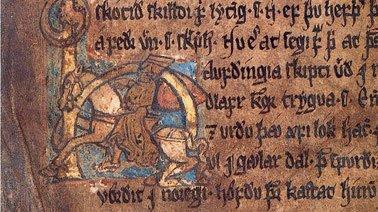MOOC List is learner-supported. When you buy through links on our site, we may earn an affiliate commission.

MOOC List is learner-supported. When you buy through links on our site, we may earn an affiliate commission.
In this course, you will learn about three Sagas, written at different times, with the aim of giving an overview of the writing period and the genre as a whole. These are Eyrbyggja Saga, Njáls Saga and Grettis Saga. We will explore the landscape and archaeology of Iceland to see how they can add to our understanding of the Sagas as well as take an in-depth look at the most memorable characters from the Sagas.
Participants will have opportunities to engage with an online community of Icelandic and international scholars, learners and others to explore topics relating to Icelandic and Nordic Medieval history beyond the course curriculum.
The Medieval Icelandic Sagas course is associated with a two-year international master’s program in Viking and Medieval Norse Studies at the University of Iceland.
What you'll learn:
- The history of Saga research since the 19th century.
- The fundamentals of Old Norse textual criticism.
- The benefits of exploring landscape and archaeological finds when reading the Sagas.
- Some of the most important character archetypes that reoccur in the Sagas.
- The interplay of Norse mythology and Christianity in the Sagas.
- Aspects of the supernatural in the Sagas.
Syllabus
Week 1: Historical overview. We explore what is unique about the Sagas as a genre, compare some contrasting views on their origin and examine how the Sagas are related to other works of European Medieval literature.
Week 2: Manuscripts. We get an overview of the world of Old Norse manuscripts and talk to some experts of Icelandic textual criticism about the extant (and lost) manuscripts of our three main Sagas.
Week 3: Landscape and Archaeology. We visit a few of the most important historical sites of Iceland and ask how they can add to our understanding of the Sagas.
Week 4: Saga Characters. We meet some memorable characters from our three main Sagas and look at their careers and conflicts. By contextualizing their biographies we come to understand the functioning of the Medieval Icelandic Commonwealth.
Week 5: Paganism and Christianity. We ask how traces of Norse Mythology can be interpreted in the Sagas, even if they are written over two hundred years after paganism officially comes to a close in Iceland. We evaluate the impact of Iceland’s conversion and how it is described in the Sagas.
Week 6: The Supernatural. We address the profusion of supernatural elements, the contradiction at the core of the Sagas’ presumed realism.
MOOC List is learner-supported. When you buy through links on our site, we may earn an affiliate commission.
MOOC List is learner-supported. When you buy through links on our site, we may earn an affiliate commission.
